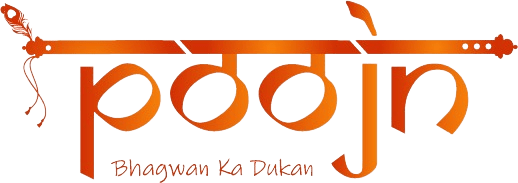
Hamare Bharat ki kahani patharon par likhi hui hai. It’s a story etched not just in grand monuments, but in the humble rocks scattered across our land. Imagine standing before a rock that has silently witnessed thousands of years of history, carrying a message from a great emperor. This is the magic of the Minor Rock Edicts of Emperor Ashoka. These aren’t just old carvings; they are a conversation with our past, a glimpse into the heart of a king who chose peace over war, and a guide to a life of Dharma that still resonates with us today.

What Exactly Are These Ancient Carvings?
When we talk about Ashoka’s Edicts, people often think of the large, detailed pillars and major rock inscriptions. The Minor Rock Edicts, however, are a bit different, but incredibly special. Think of them as Ashoka’s first heartfelt messages to his people. These are shorter, more personal inscriptions, strategically placed across the subcontinent in places like Karnataka and the Ganges valley. While the Major Edicts were like official government announcements, these smaller ones were more like a father’s advice, focusing on moral and ethical living rather than complex administration.
A King’s Transformation: The Story Behind the Edicts
Every great story has a turning point. For Emperor Ashoka, it was the brutal Kalinga War. The immense loss of life changed him forever. It was after this that he embraced Buddhism and dedicated his life to ‘Dhamma’—the path of righteousness, compassion, and non-violence. The Minor Rock Edicts were born from this profound transformation. They were his way of spreading this newfound vision, of healing a land scarred by conflict, and of building an empire founded on moral values. These stones became his messengers of peace.
The Heart of the Message: What Ashoka Wanted to Tell Us
The words carved on these rocks are simple yet profound. They speak of values that are timeless and form the very soul of our Indian culture.
A Dawn of Written Words in Bharat
It’s incredible to think that these edicts are considered the earliest evidence of writing in India. They mark the moment our ancestors began to engrave their thoughts and laws onto stone for eternity. Written in the beautiful Brahmi script in the 11th year of Ashoka’s reign, these were the first edicts in an Indian language, a monumental step in our linguistic and cultural history.

Spreading the Light of Dhamma
The central theme of these edicts is Dhamma. Ashoka wasn’t just preaching a religion; he was promoting a way of life. He spoke of respecting elders, being kind to all living beings, speaking the truth, and showing religious tolerance. This focus on social and moral precepts, rather than specific rituals, was revolutionary. It was a universal code of conduct designed to create a harmonious and compassionate society, a principle that continues to guide us.
A Glimpse into the Emperor’s Heart
These inscriptions give us a rare peek into Ashoka’s personal faith. They are deeply religious in nature, frequently mentioning the Buddha, the Sangha (the monastic community), and Buddhist scriptures. This shows his genuine devotion and his earnest desire to share the teachings that had brought him so much peace. It’s a personal testament to his journey from a mighty conqueror to a beloved spiritual guide for his people.
The King’s Signature: “Devanampriya”
For a long time, historians were puzzled by the title “Devanampriya” (Beloved of the Gods) found in many edicts. It was the discovery of the Maski and Gujarra edicts that solved the puzzle. These specific inscriptions used the name “Ashoka” along with the title, providing concrete proof that he was the author. This was a landmark discovery that connected the dots of our ancient history.
Why These Edicts Still Matter in Modern India
The whispers of Ashoka from these stones have not faded. They are woven into the fabric of modern India. The Ashoka Chakra in our national flag is a direct symbol of his wheel of Dharma. His principles of ethical governance, social welfare, and tolerance are the very ideals our nation strives for. These edicts are more than historical artifacts; they are a source of immense cultural pride and a reminder of our rich heritage. They connect us to a legacy of wisdom that has flowed through our land for centuries.
Connecting with Our Heritage Through Poojn.in
Understanding our past enriches our present spiritual journey. Exploring the wisdom of Ashoka can inspire us to live a more meaningful life, rooted in Dharma. At poojn.in, we believe in keeping these ancient traditions alive.
While you explore the profound history of our land, we are here to support your spiritual practices with authentic and pure pooja samagri. Whether you are looking for items for your daily rituals or seeking knowledge through sacred texts, our collection is curated with deep respect for tradition. You can find beautiful idols like this Tirupati Balaji Murti or explore our collection of holy books to deepen your understanding. We are just a call away at 03369029784 or you can WhatsApp us at 9476142738 to bring home the essence of our culture.
Delving Deeper: Your Questions on Ashoka’s Edicts
Many people are curious about these ancient treasures. A common thought is about where one can see these Minor Rock Edicts. They are scattered across our incredible country, inscribed on natural rock surfaces in states like Gujarat, Karnataka, and along the Tungabhadra river, making them accessible markers of our widespread history.
Another point of interest is why Ashoka felt the need to create them. He created these edicts as a way to directly communicate his vision for a moral society to his subjects, spreading messages of non-violence and compassion far and wide after the life-changing Kalinga War.
People also wonder how the Minor Rock Edicts are different from the Major ones. The main difference lies in their content and length. The Minor Edicts are shorter and focus more on personal ethical instructions, like a moral guide. The Major Edicts, on the other hand, are longer and cover a broader range of topics, including Ashoka’s administrative policies and his vision for his empire.
The language used in these edicts also tells a story. They are primarily written in Prakrit using the Brahmi script, the common language of the people. This shows Ashoka’s intent to make his message understood by everyone, not just the elite. Today, historians and archaeologists study their language and context to piece together the socio-political and religious life of ancient India, and we can all learn timeless lessons about kindness, tolerance, and peaceful coexistence from them.
Conclusion
The Minor Rock Edicts of Ashoka are a precious inheritance. They are a powerful reminder that true greatness lies not in conquest, but in compassion. As we go about our busy lives, let’s take a moment to remember these messages of Dhamma, etched in stone by a wise emperor. They are not just a chapter in a history book; they are a living philosophy, a guide to building a better, more harmonious world, one act of kindness at a time.


